Prof Xu Qingsong and his team in the University of Macau’s (UM) Faculty of Science and Technology (FST) have developed Smart Cleaner, a low-cost, obstacle-avoiding, full-orientation, intelligent disinfection robot with autonomous positioning and navigation. The robot was unveiled at the opening ceremony for the university’s 40th anniversary and the Open Day held earlier. The team is actively working with Wu Yee Sun Library of UM and designing a customised and upgraded version of intelligent disinfection robots for the university library by adjusting to the needs of the library. At present, Prof Xu’s team has provided free disinfection services for several parties, including Kiang Wu Hospital and government offices. The users provided excellent feedback and suggested that they could be further commercialised. The team hopes that these disinfection robots will be able to contribute to the fight against the epidemic.
Independent R&D Conducive to Popularisation
Smart Cleaner can substitute for disinfection staff in areas with severe outbreaks and perform disinfection and sterilisation of air and surface with multi-robot cooperation, reducing the risk of infection to frontline workers. In this issue, Prof Xu and his team share their story behind the development of the robot.
According to Prof Xu, he and his team started to develop the robot in April 2020. The development of the components, programmes, modules, appearance design and assembly were all performed in-house. This is the reason why they were able to keep the cost low, which is beneficial for the popularisation of the robot. ‘Each of our robots costs around MOP25,000 to MOP35,000, but robots with similar functions currently sell for about MOP370,000 on the market,’ he says.
‘Our robot is compatible with a wide range of disinfectants. It uses the super-dry atomisation technique and disperses the atomised droplets to the disinfection area through high-speed airflow to achieve large-space, three-dimensional sterilisation,’ explains Prof Xu. According to him, the robot mainly uses 6% hydrogen peroxide disinfectant with silver ion for atomisation disinfection. In previous lab tests, the disinfectant sprayed by the robot reached a concentration of 600-800ppm (mg/L) in ten minutes and disinfected a space of 100 square metres within 15 minutes, with 99% disinfection and sterilisation. Prof Xu says that the robot uses a dry atomised disinfectant solution, so the chemical will dissipate quickly under ventilation instead of remaining in the disinfection area, which will reduce the damage to the skin and the respiratory tract.However, the disinfection robot is not available to patrons on weekdays, as it is only ‘on duty’ every night after the library is closed, taking into account that some patrons may be sensitive to the chemicals contained in the disinfectant.
Good Disinfection Helper
The robot is approximately one metre tall and weighs 25 kilograms. It can be used for three to five hours on a full charge. The robot consists of four modules, namely the intelligent mobile robot module which controls the robot’s movement and disinfectant concentration, the disinfectant module for disinfectant spraying, the status monitoring module that monitors the humidity and the robot’s power level, and the power supply module to supply electricity. Through the self-developed communication system, the robot implements AI-based distributed scheduling and achieves intelligent collaboration of multiple robots, leading to safe and efficient completion of disinfecting tasks.
‘As long as the information about the disinfection site is pre-set in the system, the robot can scan the site with its radar and automatically create a map, plan its own trajectory and navigation, and avoid obstacles by scanning with the radar to disinfect as it goes,’ explains Prof Xu. He adds that users can choose to use the handle to direct the robot according to their needs or plan the disinfection route for the robot via the computer in advance. In environments with poor signal reception, such as warehouses or ICU units, users can use the camera and handle on the robot to view its surroundings and direct it, respectively.
Past Experience Helps Current Research
Prof Xu is grateful for the financial support of the Science and Technology Development Fund, Macau, the support of the FST in terms of manpower and material resources, as well as the professional monitoring of air quality indicators provided by the Institute for the Development and Quality, Macau, for the development and future applications of the robots.
Prior to the introduction of this robot, Prof Xu had been conducting robotics-related research for more than ten years, developing industrial robots, robotic arms, and bio-cellular micro/nano-manipulation robots. ‘The control technology and mechanical design aspects of disinfection robots have been applied to a number of robots we have developed in the past. We can say that we are building on our previous innovations. In the future, we hope to apply our technology to the society and further commercialise our research findings for the benefit of the community,’ he says.
Source: My UM e-Version
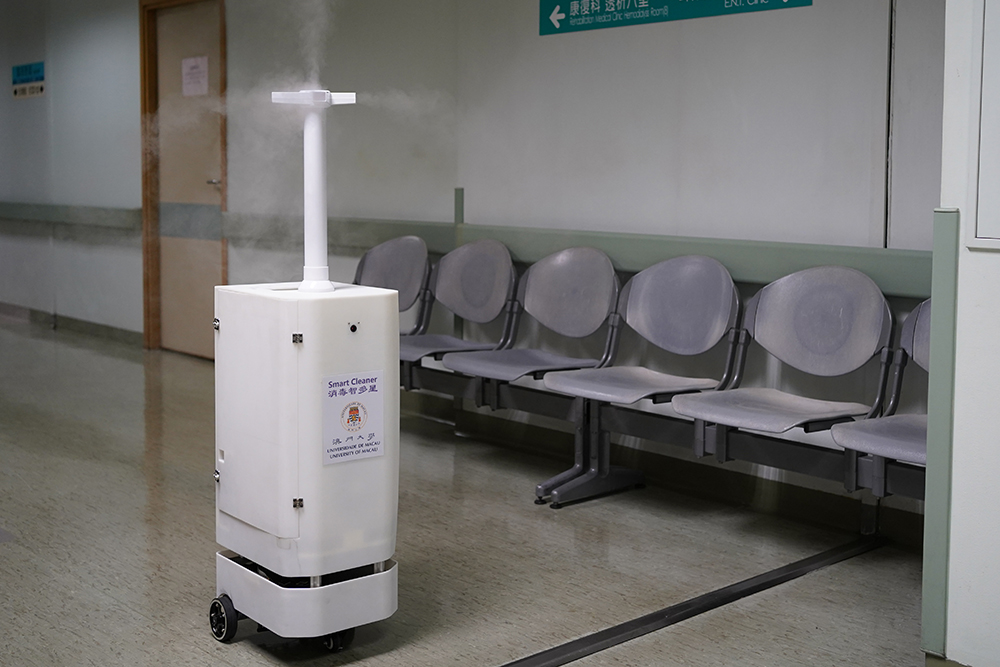
Healthcare anti-epidemic intelligent robots disinfect in the outpatient department of Kiang Wu Hospital
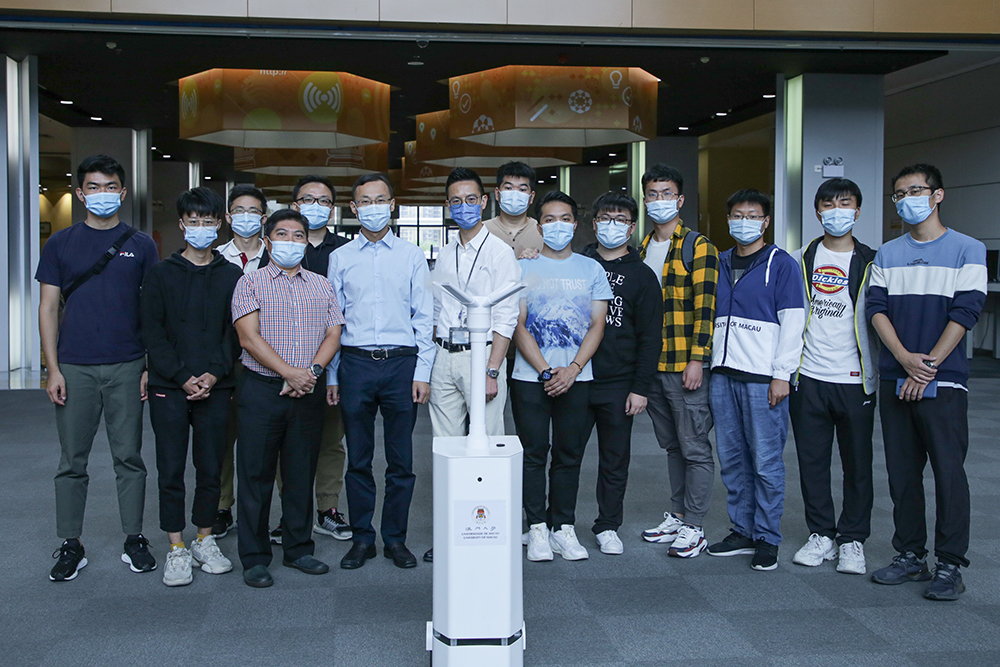
Prof Xu and his team present the healthcare anti-epidemic robot to the UM library
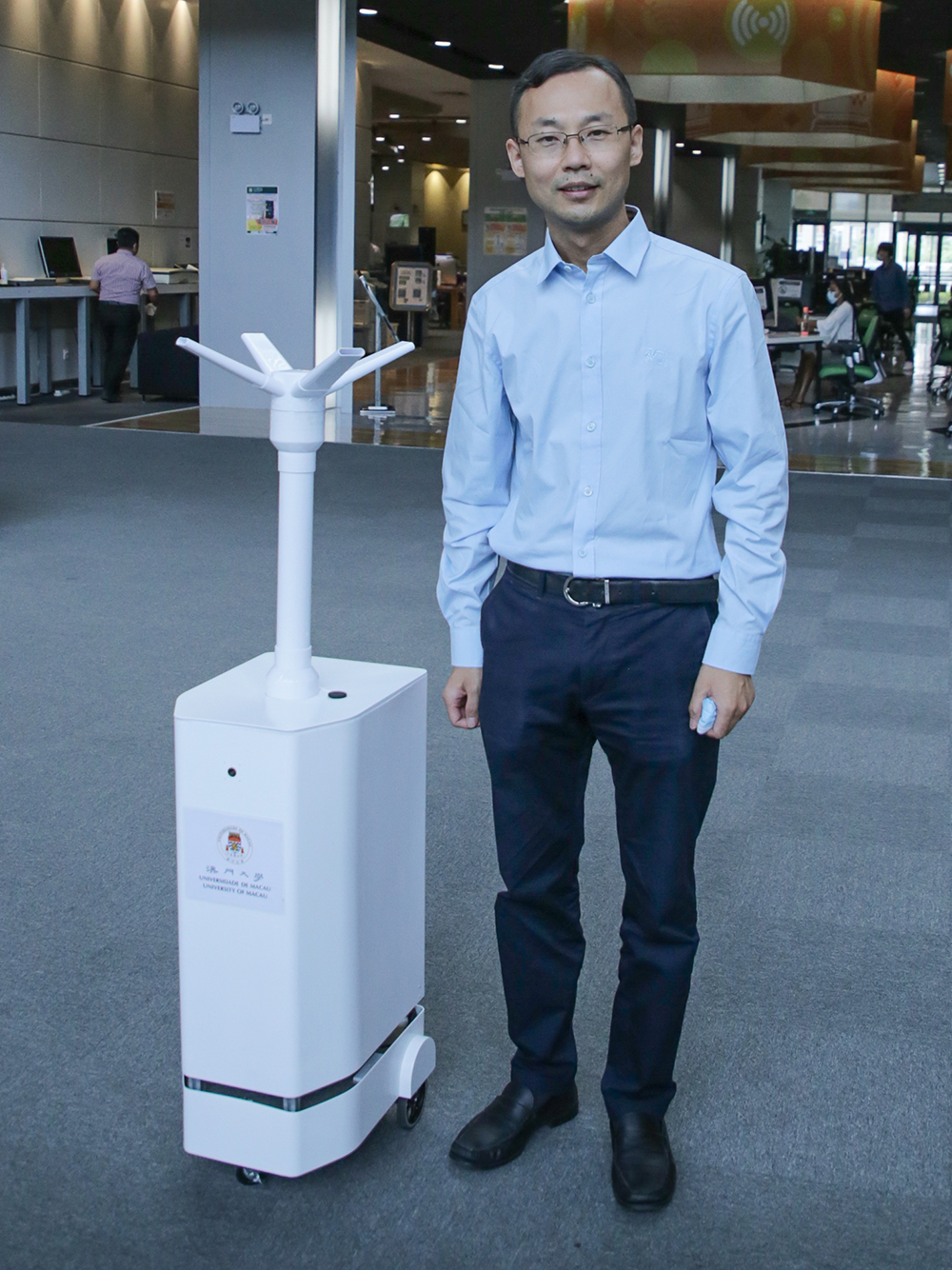
Prof Xu has more than ten years of experience in developing robots 4. A robot structure diagram
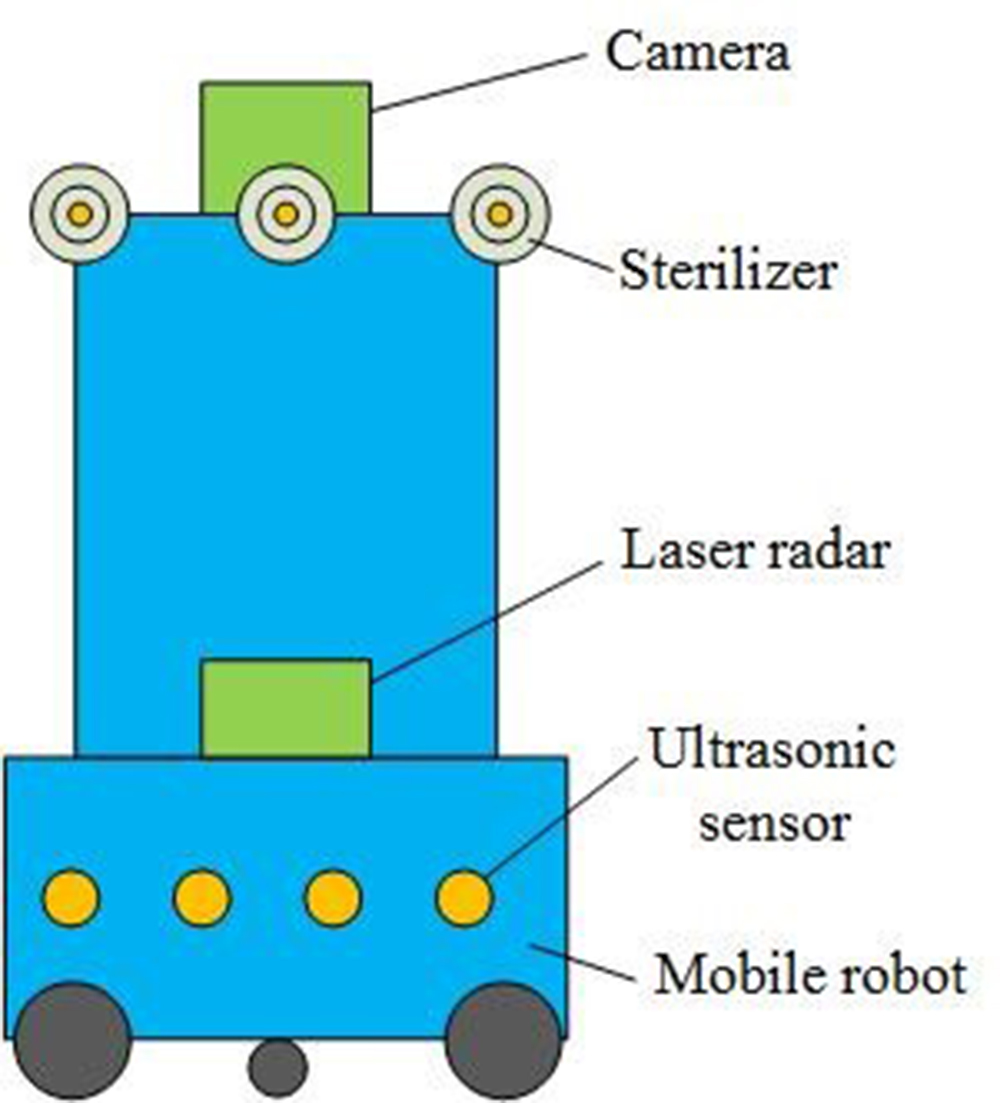
A robot structure diagram
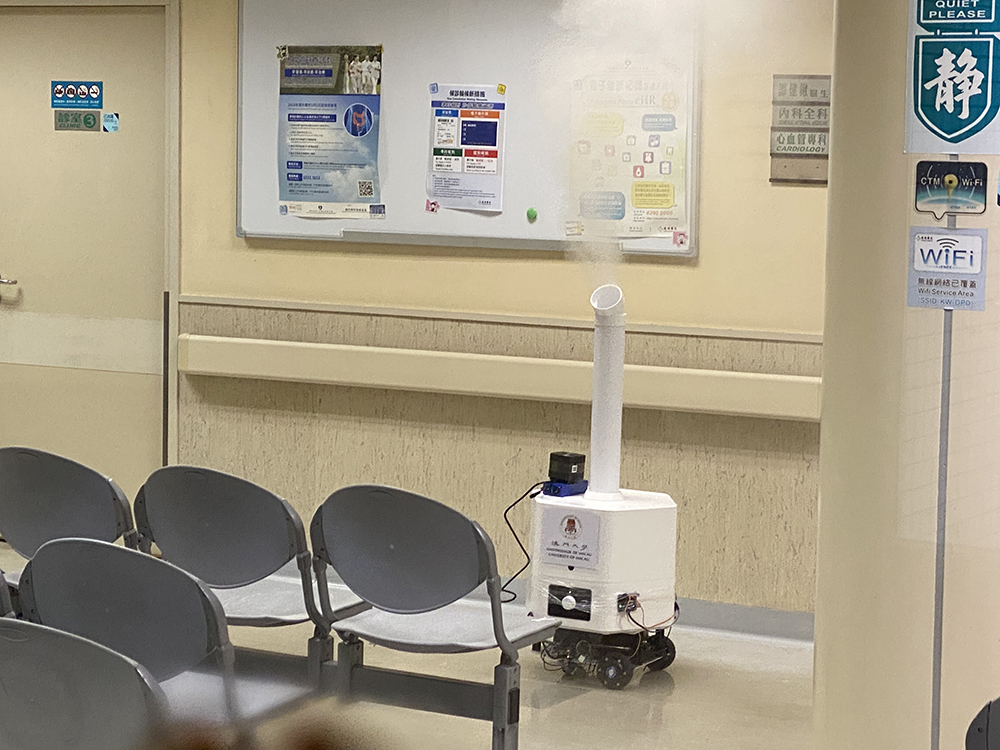
Healthcare anti-epidemic intelligent robots disinfect in the outpatient department of Kiang Wu Hospital
